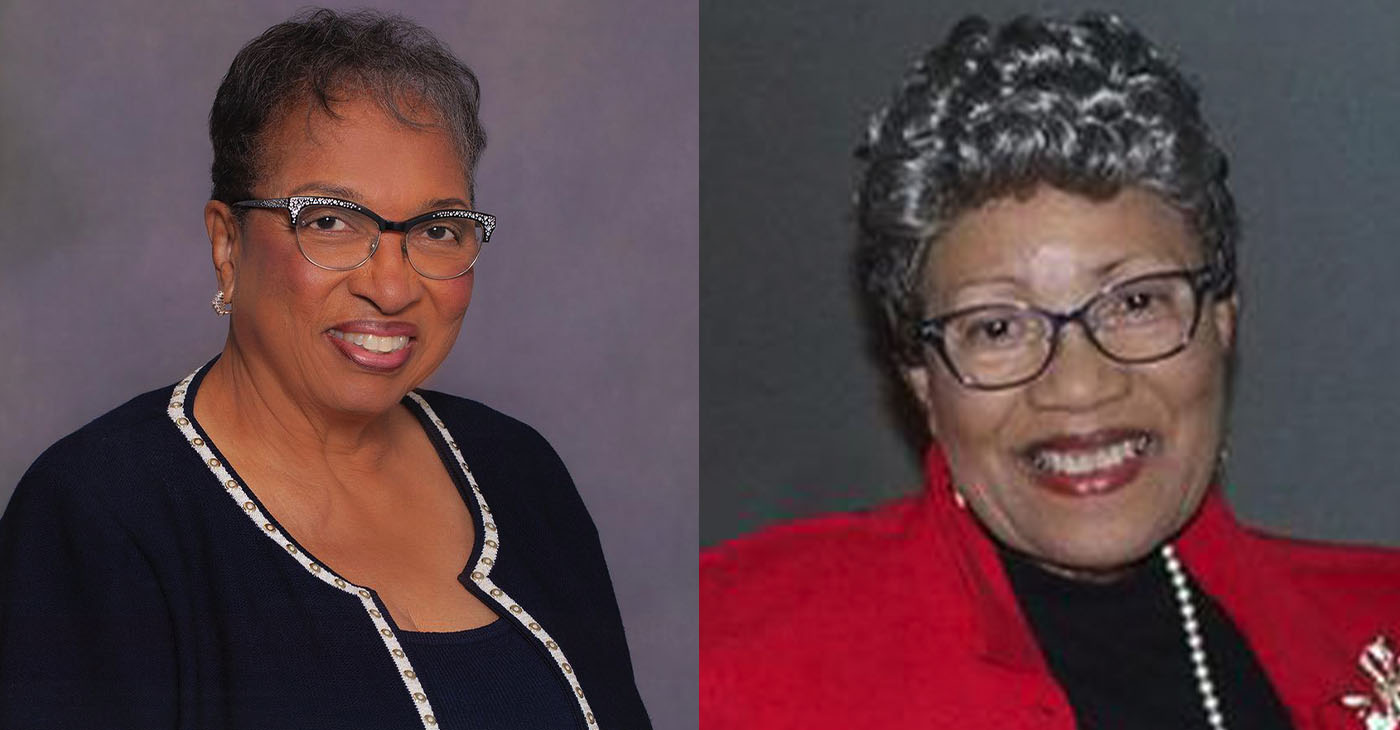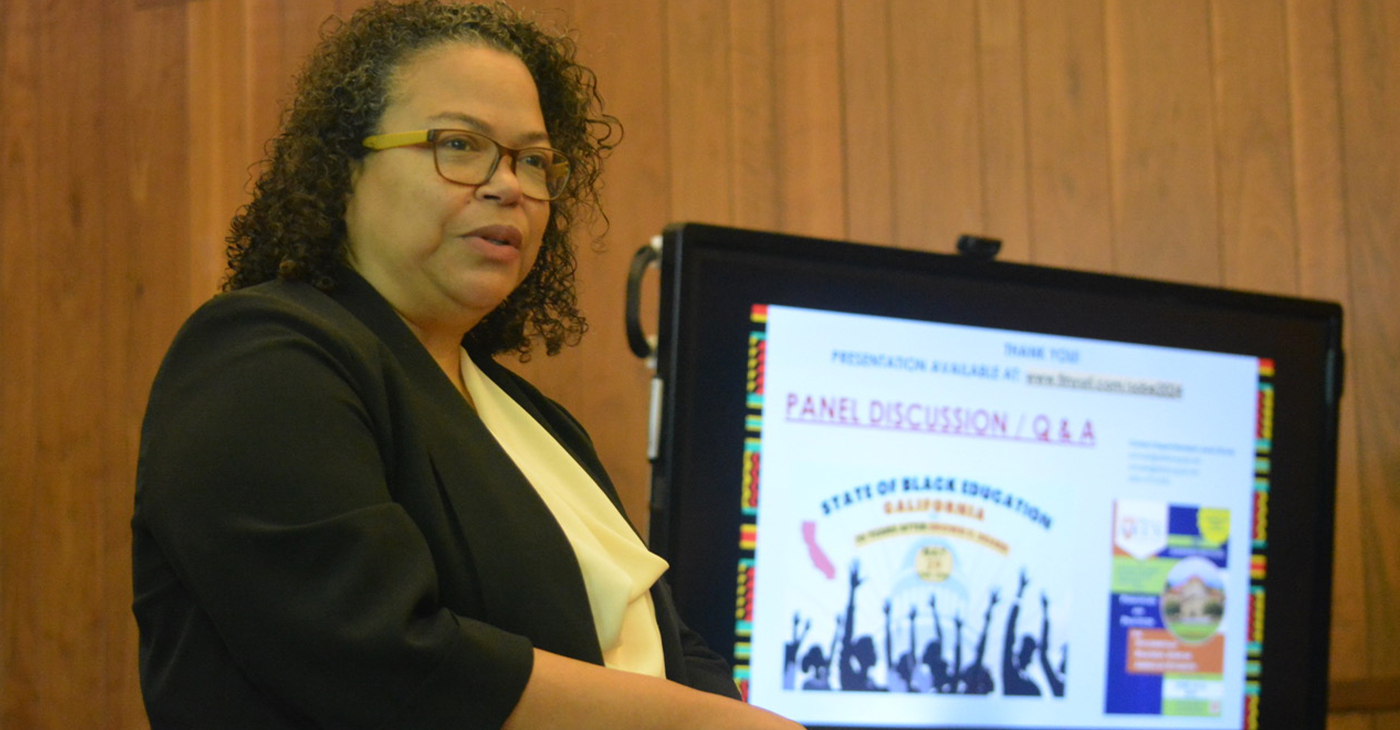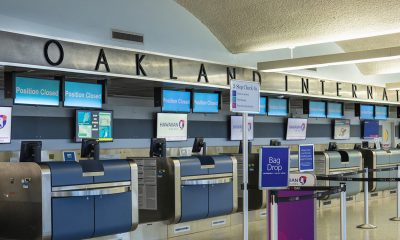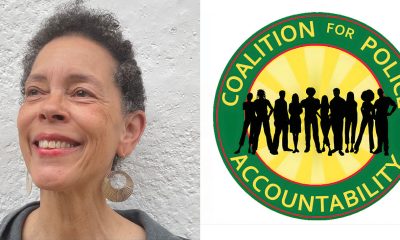California Black Media
Aging Californians: Relaxing the State’s Public Meeting Law Is a Good Thing
During the COVID-19 pandemic, Gov. Gavin Newsom issued an executive order that temporarily suspended some of the requirements of the California’s public meeting law, the Bagley Keene Act. Newsom’s executive order allowed elected boards, commissions and other state “bodies” to hold remote meetings via teleconference without posting each official’s teleconference location (which in some cases were private homes); posting agendas at each location; or making those locations accessible to the public, as required by law.

By Manny Otiko
California Black Media
During the COVID-19 pandemic, Gov. Gavin Newsom issued an executive order that temporarily suspended some of the requirements of the California’s public meeting law, the Bagley Keene Act.
Newsom’s executive order allowed elected boards, commissions and other state “bodies” to hold remote meetings via teleconference without posting each official’s teleconference location (which in some cases were private homes); posting agendas at each location; or making those locations accessible to the public, as required by law.
A bill is currently being considered by the California legislature that would extend some of the changes to the Bagley-Keene Open Meeting Act until Jan. 1, 2026.
Senate Bill (SB) 544, which was amended Aug. 14 and is currently being reviewed by the Assembly Appropriations Committee, was introduced by Sen. John Laird (D-Santa Cruz) in February.
Supporters of the legislation argue that the bill saves taxpayer money by driving down the costs associated with in-person meetings by up to 90%, and that virtual meetings give access to vulnerable populations who may not be able to attend meetings in person.
One of those vulnerable populations is aging Californians.
“For many citizens, this was a way to stay active in the community,” says former Assemblymember Cheryl Brown, who is now the chair of the California Commission on Aging.
“Once we got them trained, they fall in love with it. They become engaged with their government,” said Brown.
“They want more communication, and they don’t want to be isolated,” Brown says referring to the changes SB 544 is proposing. She wants people to have permanent access to public meetings.
During the pandemic, there was record participation in meetings because they were broadcast online and people could access them by teleconference.
However, SB 544 has its share of opponents.
Groups such as the First Amendment Coalition (FAC), the California Newspaper Publishers Association, California Common Cause, The Society of Professional Journalists, and other groups committed to holding government accountable have spoken out against the bill.
They believe that if SB 544 passed, it would lead to more government secrecy and turn state government boards and commissions into “faceless bureaucracies.”
The FAC was one of several civic groups that co-signed a letter critical of SB 544.
“This rewriting would ensure that a state body would never again have to meet in person. This would fundamentally undermine one of the law’s key protections for public access and participation — the guarantee that the press and public can be physically present in the same room as those sitting on the dais and making decisions. Such physical presence has been a constant hallmark of democratic institutions,” according to the letter.
David Loy, legal director at the FAC, told California Black Media (CBM) he is concerned SB 544 would allow more online meetings and it would diminish elected officials’ face-to-face contact with their constituents.
He added that the governor’s executive orders about online meetings were established during the COVID pandemic — and that the health crisis is over.
According to Loy, elected officials decide public policy in these meetings. And he feels that needs to be done in-person.
“Public officials should be meeting face-to-face with the people they serve,” he said.
Sedalia Sanders, former mayor of El Centro who is currently active with her city’s local agency on aging and is active with the California Commission on Aging, disagrees with Loy.
Sanders told CBM since many of the Commission’s meetings are held in Sacramento, she participates through video conferencing.
“I don’t think anything is lost,” she said.
Sanders says participants can still see and interact with their representatives through video cameras.
“For an elected official to participate in a meeting online, the majority of the board members still have to meet in person to form a quorum,” she added.
Although born during World War II, Sanders has embraced modern technology. She has a cell phone and navigates the internet. However, she said that not all senior citizens are as tech savvy as she is.
Many of them don’t know you have to pay for the internet. And this can be a problem, especially if you’re on a fixed income.
Brown says that the bill’s opponents are conflating the issues. Boards and commissions are different than elected leaders voting on public policy matters, and seniors and disabled communities support this bill because it’s about inclusion, not exclusion.
“Seniors don’t want to sit back and just play pickleball,” she said. “They want to have a say in the decisions that affect their lives and remote access allows them to do that.”
Activism
Oakland Post: Week of June 12-18, 2024
The printed Weekly Edition of the Oakland Post: Week of June 12-18, 2024

To enlarge your view of this issue, use the slider, magnifying glass icon or full page icon in the lower right corner of the browser window. ![]()
Antonio Ray Harvey
More Segregated Than Deep South: ACLU Releases Report on Calif. Public Schools
The 2024 State of Black Education: Report Card was recently published by the American Civil Liberties Union California Action (ACLU California Action). It states that California is the third most segregated state for Black students. Co-author of the report, policy counsel Amir Whitaker from ACLU Southern California explained the criteria the ACLU use to rank California during the commemoration of the 70th anniversary of the landmark 1954 U.S. Supreme Court decision Brown vs. Board of Education held at the State Capitol the day after the Memorial Day holiday.

By Antonio Ray Harvey, California Black Media
The 2024 State of Black Education: Report Card was recently published by the American Civil Liberties Union California Action (ACLU California Action).
It states that California is the third most segregated state for Black students.
Co-author of the report, policy counsel Amir Whitaker from ACLU Southern California explained the criteria the ACLU use to rank California during the commemoration of the 70th anniversary of the landmark 1954 U.S. Supreme Court decision Brown vs. Board of Education held at the State Capitol the day after the Memorial Day holiday.
“For every state in the Deep South, California (schools) are more segregated,” Whittaker said. “People often think that California is not segregated or unequal as Deep South states and others. The inequalities here (in California) are actually wider.”
New York and Illinois are ahead of California regarding the racial diversity of their student bodies. According to a report May 2022 report by Stanford Graduate School of Education, the Los Angeles, Philadelphia, and New York City school districts are in the top 10 most racially segregated districts for White-Black, White-Hispanic, and White-Asian segregation based on the average levels from 1991-2020.
In bigger school districts, segregation between low-income (students who are eligible for free lunch) and non-low-income students increased by 47% since 1991, according to the Stanford Graduate School’s report.
“That’s why it’s important to look at this data,” Whitaker said. “When you have millions of people living in places like Los Angeles, Chicago, and New York, the urban areas are a lot more segregated than the south. That’s a big part of it.
A number of factors contribute to the segregation of schools in California such as parents sending their children to private schools, others optioning for homeschooling, and other reasons, Whitaker said.
The Brown v. Board of Education case declared that separating children in public schools based on race was unconstitutional. However, Whitaker pointed to cases after the landmark decision that circumvented that federal law.
According to a 2014 report by the Civil Rights Project, in the 1990s, decisions by the U.S. Supreme Court decision ended federal desegregation orders in San Francisco and San Jose. In addition, court decisions in the state that ordered desegregation in the 1970s were overturned by the 1990s. Legally, California has no school integration policy to adhere to.
“This is why we did this report. There needs to be a report just on this issue (of school segregation),” Whitaker told California Black Media. “Right now, there’s no task force or anything addressing it. I have never seen the California Department of Education talk about it. This is a pandemic (and) a crisis.”
ACLU Northern California hosted an overview of the report and panel discussion at the State Capitol on May 29. California Black Legislative Caucus member Assemblymember Mia Bonta (D-Alameda) and Sen. Steven Bradford were the guest speakers. Parents, students, educators, and Black education advocates from all over the state attended the 90-minute presentation at the State Capitol.
School segregation is the No. 1 issue listed in among the report’s “24 areas of documented inequality,” along with problematic trends of racial harassment, a continuous decline of Black student enrollment, school closures, connection with school staff, chronic absenteeism, low Black teacher representation, and parent participation.
California Black Media
L.A. Pilot Program Addressing Asian American Hate Could Be California Model
Californians who are Asian American or Pacific Islanders (AAPI) were the targets of an escalated number of hate crimes and hate incidents during the COVID-19 pandemic. Many AAPI people, particularly the elderly, reported being too scared to leave their homes. Others experienced firsthand hateful incidents stemming from deep-rooted prejudices and stereotypes — such as verbal or physical assaults in public.

By McKenzie Jackson, California Black Media
Californians who are Asian American or Pacific Islanders (AAPI) were the targets of an escalated number of hate crimes and hate incidents during the COVID-19 pandemic.
Many AAPI people, particularly the elderly, reported being too scared to leave their homes. Others experienced firsthand hateful incidents stemming from deep-rooted prejudices and stereotypes — such as verbal or physical assaults in public. Yet, too many of them were hesitant to voice their emotions, according to Yu Wang, an associate marriage and family therapist at the Asian Pacific Counseling and Treatment Center in Los Angeles.
“A space for healing is critically needed,” Wang said, also noting that some Asian cultures don’t put a heavy emphasis on sharing feelings and vulnerabilities. “It makes it difficult to talk about experiences related to racism. Also, many of us lack to the language to express emotions, which exacerbates feelings of isolation and fear.”
The Asian/Pacific Islanders (AAPI) Equity Alliance in collaboration with other Asian American community groups recently launched the Healing Our People through Engagement (HOPE) pilot program in Los Angeles County geared at healing racial trauma experienced by Asian American community members by providing healing spaces and reducing isolation. Based on the successes of the initiative, supporters and organizers believe the “culturally centered” program could become a model for other cities around the state.
Ethnic Media Services hosted an hourlong Zoom press conference on the last day of May, which was AAPI Heritage Month, to allow HOPE program facilitators and allies the opportunity to provide details of the initiative to the media.
HOPE is a healing space for five distinct Asian American communities — Cambodian, Chinese, Filipino, Japanese, and Korean — created to make sense of their experiences with racism and recent surges in hate crimes. The psychology of the program is radical healing, a framework that has aided Black people in dealing with years of prejudice-caused trauma. HOPE is funded by a grant from the California Department of Social Services.
More than 11,000 stories of hate have been reported to the California-based online resource, Stop AAPI Hate, since 2020.
AAPI Managing Director of Programs Michelle Sewrathan Wong called HOPE vital and said Asian Americans endured episodes of brutality on a scale not seen in generations.
“They were scapegoated by politicians for transmission of COVID-19, targeted for violent physical attacks, made to feel unsafe and unwelcome in their own communities and bullied and ridiculed by neighbors and strangers,” she stated.
HOPE opened healing spaces in Los Angeles County that offer six two-hour sessions conducted in groups by facilitators, who are staff from partner community organizations.
DePaul University Associate Professor of Psychology Dr. Anne Saw said the radical healing framework promotes healing over coping.
“Healing may be lifelong because racism is ongoing, yet a program like ours reminds people of the cultural, community, family, and individual strengths they have to resist racism,” Saw said. We believe that healing in a group can be more powerful than an individual engaging in healing on their own because of the support they receive.”
This resource is supported in whole or in part by funding provided by the State of California, administered by the California State Library in partnership with the California Department of Social Services and the California Commission on Asian and Pacific Islander American Affairs as part of the Stop the Hate program. To report a hate incident or hate crime and get support, go to CA vs Hate.
-

 Business4 weeks ago
Business4 weeks agoCal. Supreme Court Could Strip Gov and Legislature of Power to Raise Taxes
-

 California Black Media4 weeks ago
California Black Media4 weeks agoActivist and Organizer Peggy Moore and Wife Die in Fatal Car Crash
-

 California Black Media4 weeks ago
California Black Media4 weeks agoExpect to See a New Flat Rate Fee of $24 on Your Electricity Bill
-

 Bay Area4 weeks ago
Bay Area4 weeks agoOakland International Airport Will Now Be Called ‘San Francisco Bay Oakland International Airport’
-

 Bay Area4 weeks ago
Bay Area4 weeks agoRadical Proposal to Limit the Power of Oakland’s Police Commission
-

 Business4 weeks ago
Business4 weeks agoBanning Menthol Cigarettes: California-Based Advocacy Group Joins Suit Against Federal Govt.
-

 Alameda County4 weeks ago
Alameda County4 weeks agoAlameda DA Pamela Price is Ready to ‘Protect the Win’ in Upcoming Recall Election
-

 Arts and Culture4 weeks ago
Arts and Culture4 weeks agoThird Annual Town Up Tuesday Lifts Oakland’s Community, Culture and Joy






















































